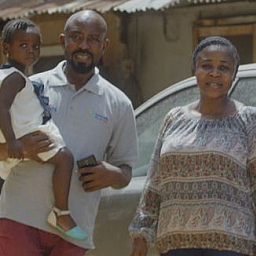Browse by category

Doyin Tunde
You have galactorrhea you need to see your doctor who will check your prolactin level(high level of this hormone causes this) and try to find out the cause. There are medications that would help dry the discharge.
Enough Pap with little milk
Please note that breastmilk is produced based on demand. That is, the more the baby sucks, the more the breastmilk will flow. Let her keep putting baby to breast
You can get the lasinoh lanolin cream over the counter at any good pharmacy or baby shop for the nipple sore. You can also express the milk from the sore breasts and feed baby till the sore heals.
Most complaints of sore nipples, engorged breast, pain when breastfeeding and eventual mastitis or breast abscess have to do with improper attachment of the baby to the breast. Painful breasts mostly has to do with the baby sucking or chewing on the nipple, painful for the mother and frustrating for the baby.
For a successful and painless breastfeeding session, the whole of the nipple and majority of the areola (dark part) must be in the baby's mouth. Sit comfortably and let baby come to meet your breast and not you slouching to meet the baby. Additionally, always alternate the breasts between feeds. Let one breast empty first before switching to another.
And if you still feel you are not putting baby rightly on the breast, complain at the hospital so as to be directed.
Most complaints of sore nipples, engorged breast, pain when breastfeeding and eventual mastitis or breast abscess have to do with improper attachment of the baby to the breast. Painful breasts mostly has to do with the baby sucking or chewing on the nipple, painful for the mother and frustrating for the baby.
For a successful and painless breastfeeding session, the whole of the nipple and majority of the areola (dark part) must be in the baby's mouth. Sit comfortably and let baby come to meet your breast and not you slouching to meet the baby. Additionally, always alternate the breasts between feeds. Let one breast empty first before switching to another.
And if you still feel you are not putting baby rightly on the breast, complain at the hospital so as to be directed.
Yes, dieting can affect the calorie requirements needed by your baby for optimum development.
Dieting is not encouraged in breastfeeding mums. You should eat enough
Dieting is not encouraged in breastfeeding mums. You should eat enough
Ensure you're not selfmedicating, meanwhile lonart is safe during breastfeeding.
Can you describe this noise?. Noise is not necessarily an indication that something is wrong. The sound you may hear is like a puff of air coming from the back of the throat, or "kha, kha," the sound of the baby exhaling after a swallow. If you hear that noise, it is a reliable indicator that the baby is swallowing.
If this persist, you might consider seeing a doctor
If this persist, you might consider seeing a doctor
Paediatricians generally do not approve the use of bottle for feeding because of the inherent danger of bacteria festering around the teat area due to improper cleaning. That is why spoon and cup is preferable.

Dr Aina Johnson
Paediatrician
A small number of new mums have difficulty producing enough breast milk due to medical reasons, which include:
Excessive blood loss (more than 500 ml) during the birth or retained fragments of the placenta can delay your milk coming in (which usually happens around three days after the birth).
A history of polycystic ovarian syndrome, diabetes, thyroid or other hormonal disorders. Mums with these conditions sometimes experience a low milk supply. The rare medical condition mammary hypoplasia, in which there isn’t enough milk-producing glandular tissue within the breast.
Previous breast surgeries or breast trauma – although many mums who have had surgery go on to breastfeed successfully. If any of these conditions applies to you, see a lactation consultant or breastfeeding specialist.
Excessive blood loss (more than 500 ml) during the birth or retained fragments of the placenta can delay your milk coming in (which usually happens around three days after the birth).
A history of polycystic ovarian syndrome, diabetes, thyroid or other hormonal disorders. Mums with these conditions sometimes experience a low milk supply. The rare medical condition mammary hypoplasia, in which there isn’t enough milk-producing glandular tissue within the breast.
Previous breast surgeries or breast trauma – although many mums who have had surgery go on to breastfeed successfully. If any of these conditions applies to you, see a lactation consultant or breastfeeding specialist.
Try and express the excess milk. Also apply breastfeeding pad to soak up the milk that leaks
You need to relax, drink a lot of water and breastfeed/express the breast milk even while at work...the higher the demand or expression of breast milk, the more the milk flows
You can give but not absolutely necessary especially if the mum is also taking postnatal multivitamins as well
EBF is possible if you set your mind to it. You can express breastmilk and keep for your baby.
Yes. There is no special diet for breastfeeding mom, all your need to eat is good well nourishing balanced diet and avoid medications not prescribed by the doctor and also alcohol.
You can take Lipton tea sparingly not always.
The woman have galactorrhea, she need to see a doctor who will check the prolactin level (high level of this hormone causes this) and try to find out the cause. There are medications that would help dry the discharge but it is better to find out the cause before prescribing medications, see your doctor.
You're not supposed to take any slimming tea as a breastfeeding mum.

Dr Aina Johnson
Paediatrician
Your baby does not need any treatment, at least for what you've described. Oka ori is called fontanelle. The “soft hole or space” often erroneously believed to be an abnormality is A NORMAL PART of the baby’s head. It is called ANTERIOR FONTANELLE (AF). Every baby has it. It is there to allow along with the small spaces (sutures) between the different bones of the skull to accommodate the baby’s brain growth. So it is not “OKA” or any other thing….It is a normal part of the baby’s head.



